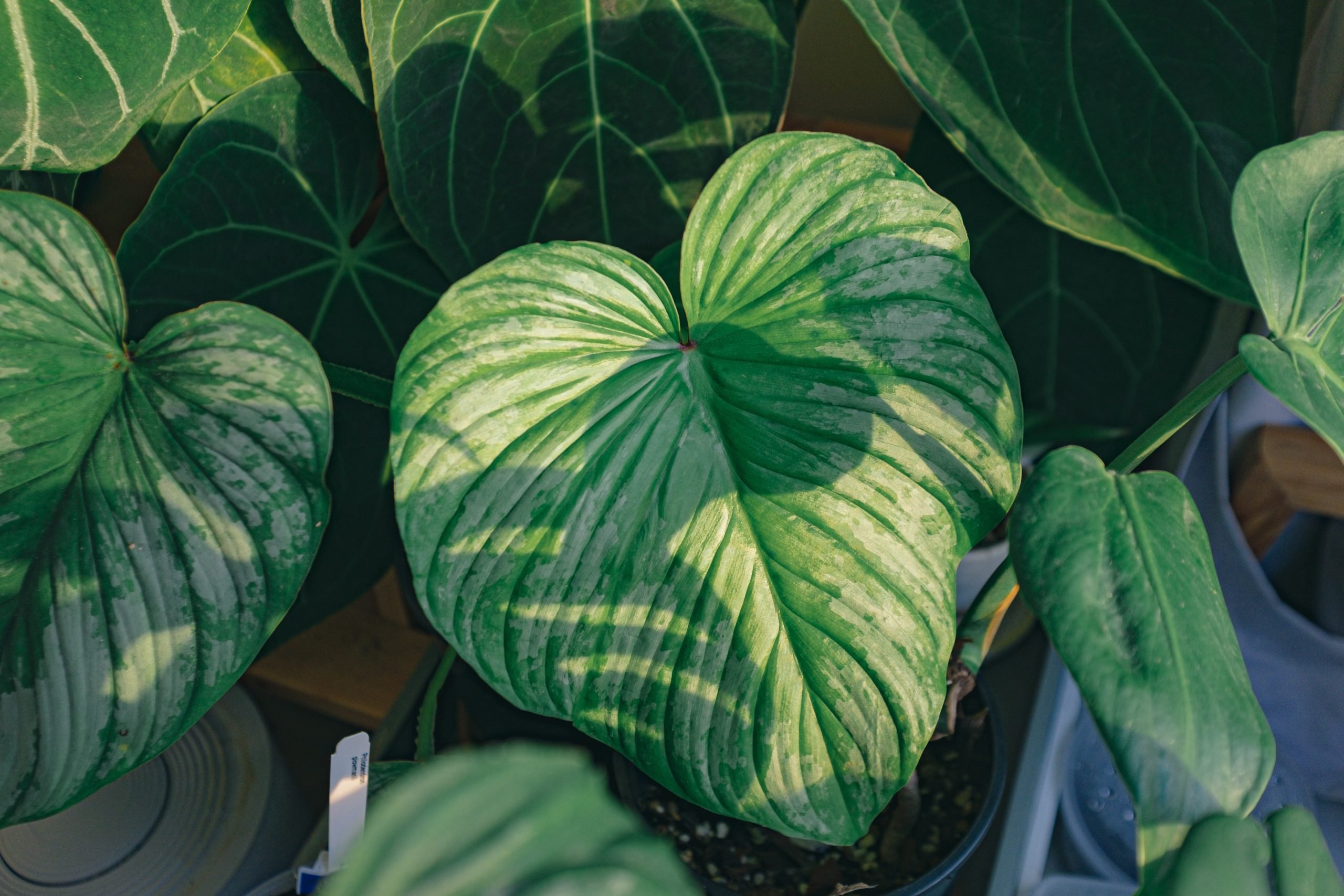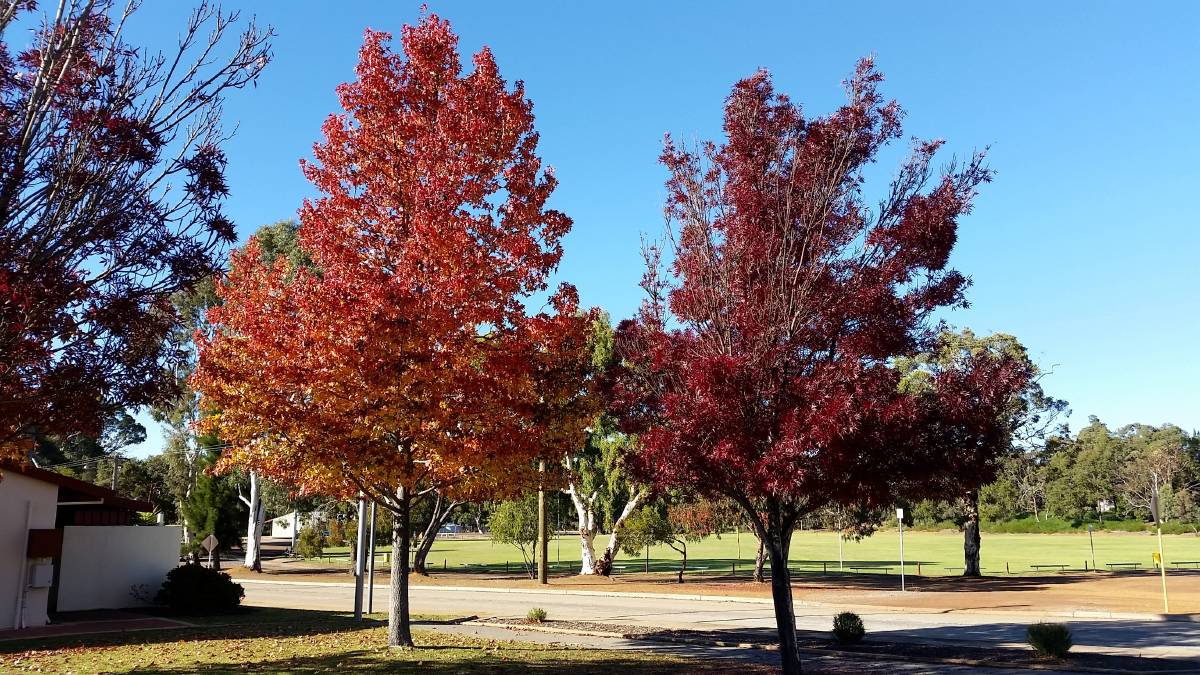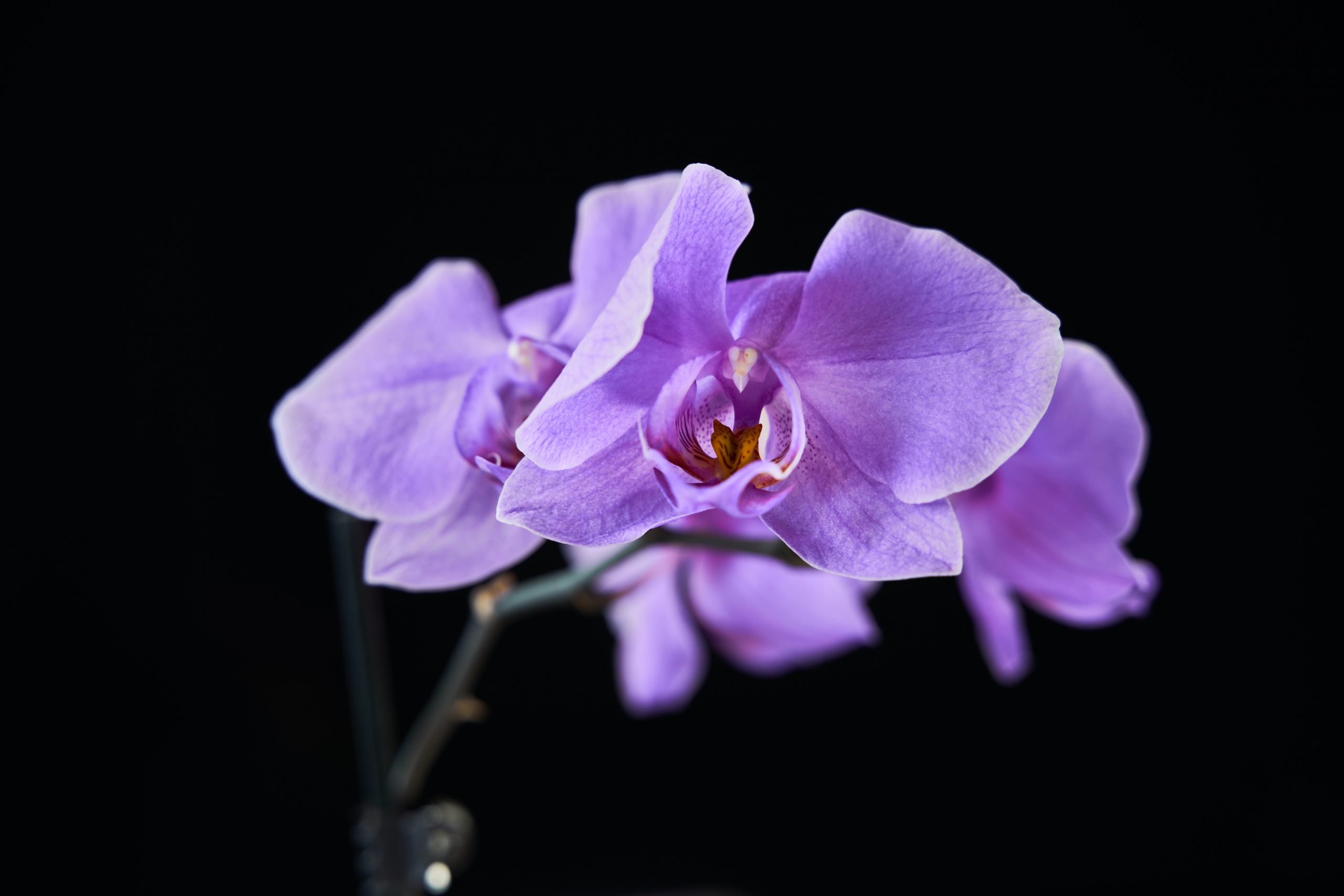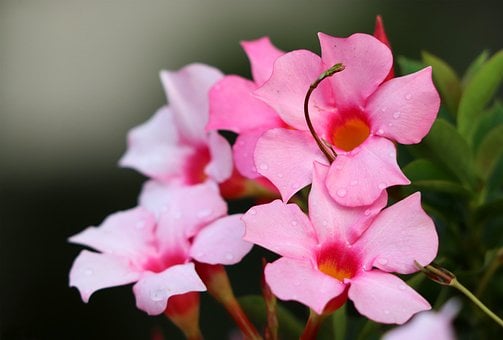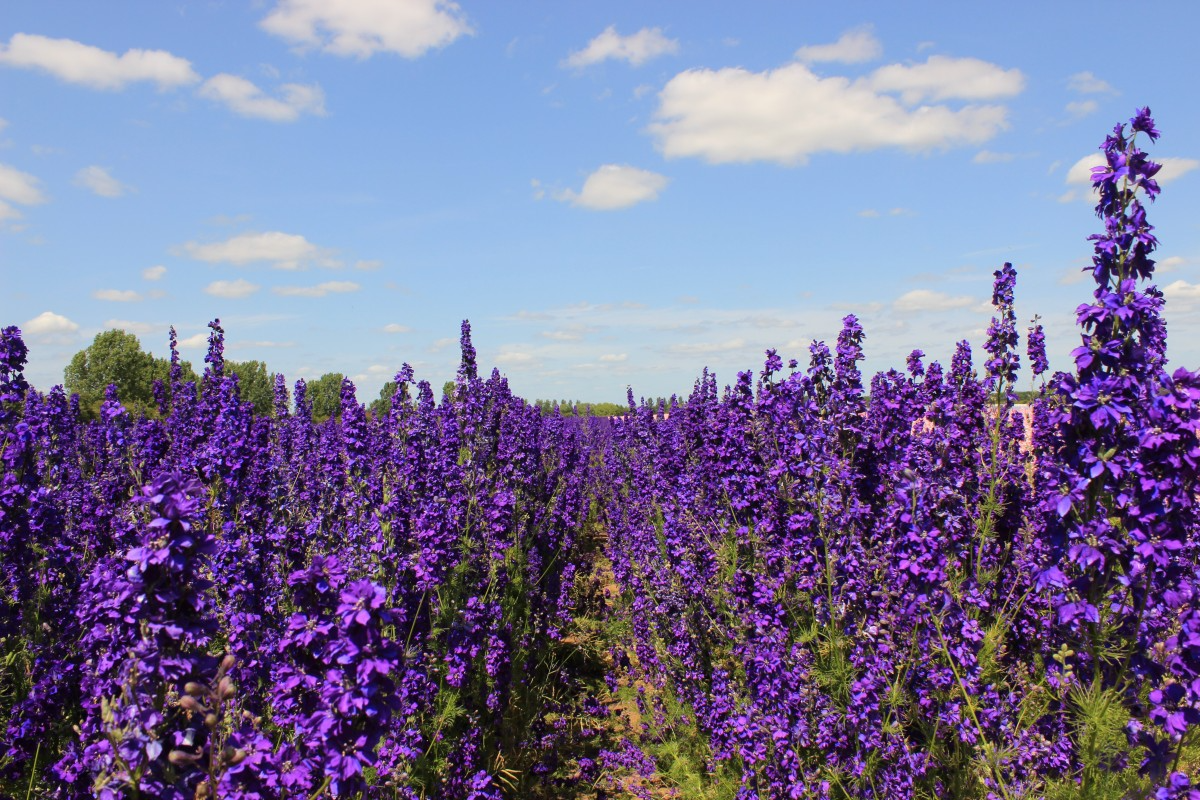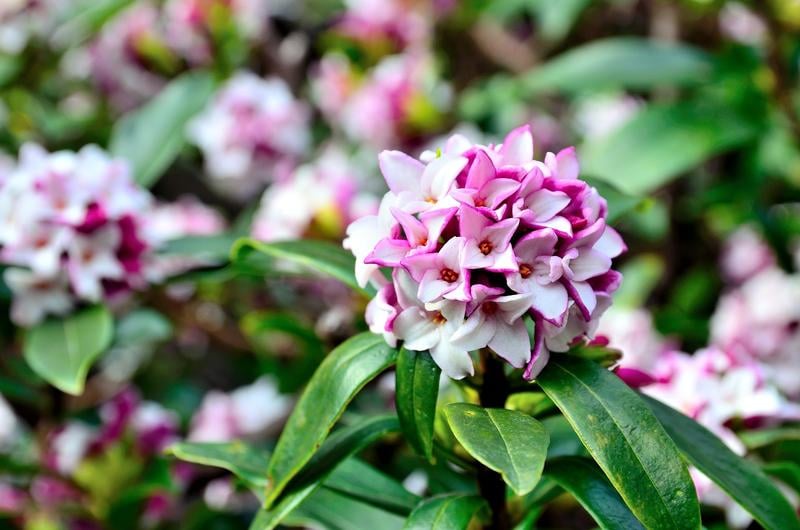Top 34 Orange Perennials for Your Beautiful Garden
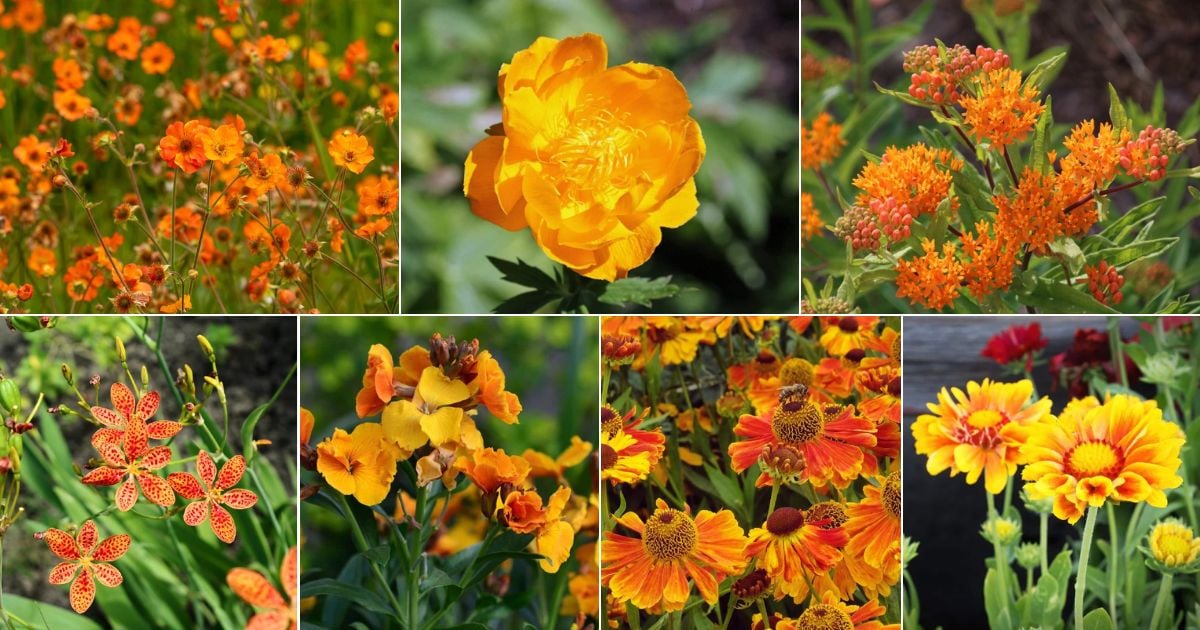
Table of Contents
Are you looking for some orange perennials for your garden? Then you are at the right place. Orange-flowering perennials are an excellent choice for your garden, especially if you want to add vibrant energy. Orange is a colour spectrum between red and yellow. The colour orange represents good health, joy, festivity, friendship, and harmony. And planting orange flowering perennials can be a great way to improve the aesthetics of your garden.
In addition, orange flowering ornates can attract pollinators. Also, they make your garden look incredible and lively. Like, you can check Rose Bare rooted plant from Blue Magic Design. So, keep reading if you are looking for good options for orange flowering ornates for your garden.
Here we will list 34 excellent ornate orange perennials for your garden.
The Symbolism of Orange Flowers in Your Garden
Every colour has its symbolism and meaning, and so does the colour orange. Orange flowering perennials are not only vibrant and add a dynamic view to your garden, but they also have symbolism. Orange is a cheerful colour that brings happiness, joy, warmth, energy, and vitality.
The colour also lifts the spirit of every viewer. It is associated with adventure, creativity, and life energy. So, when you add ornate orange perennials to your garden, they bring enthusiasm, vibrancy, and positivity to your house.
List of 34 Orange Flowers for Garden
Orange flowering plants add life to your garden and lift the spirit of the landscape. Various ornate orange perennials are available, from Canna lily, Chrysanthemum, and dahlia to Lantana, Parisian buttercup, California poppy, and more.
1. California Poppy
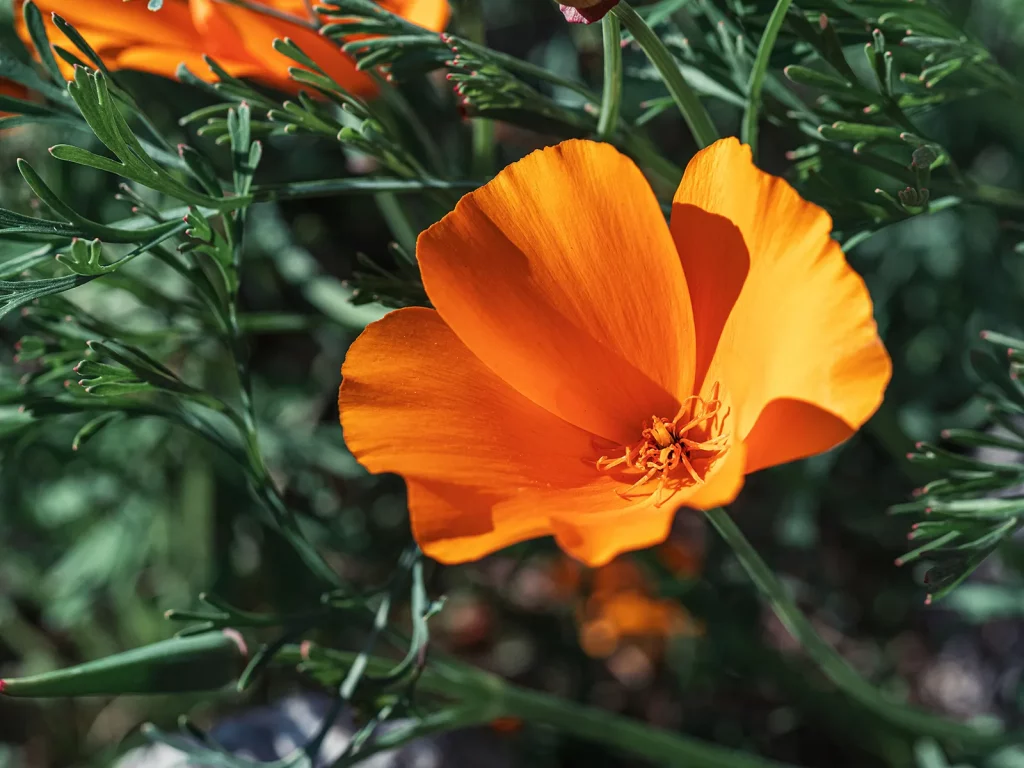
The cup-style blossoms of California poppies are gorgeous. They carpet the landscape with beautiful and vibrant cups stemming up from the ground. They grow very fast and also last a few days. You may feel the heavenly flame-orange flowers spring up overnight as they bloom in bursts. Also, they grow in the colder areas of the UK as annual flowering. If you plant them under the right conditions, it has the capability to cover the whole meadows. It attracts visitors from February to September.
Specifications
- Botanical name – Eschscholzia Californica
- Soil type – loam or sand with any pH level
- Sunlight– total sun exposure
- Exposure – exposed or semi-sheltered
- Hardness – H3
- Size – 0.1 to 0.5 M spread and height
2. Orange Ball Tree
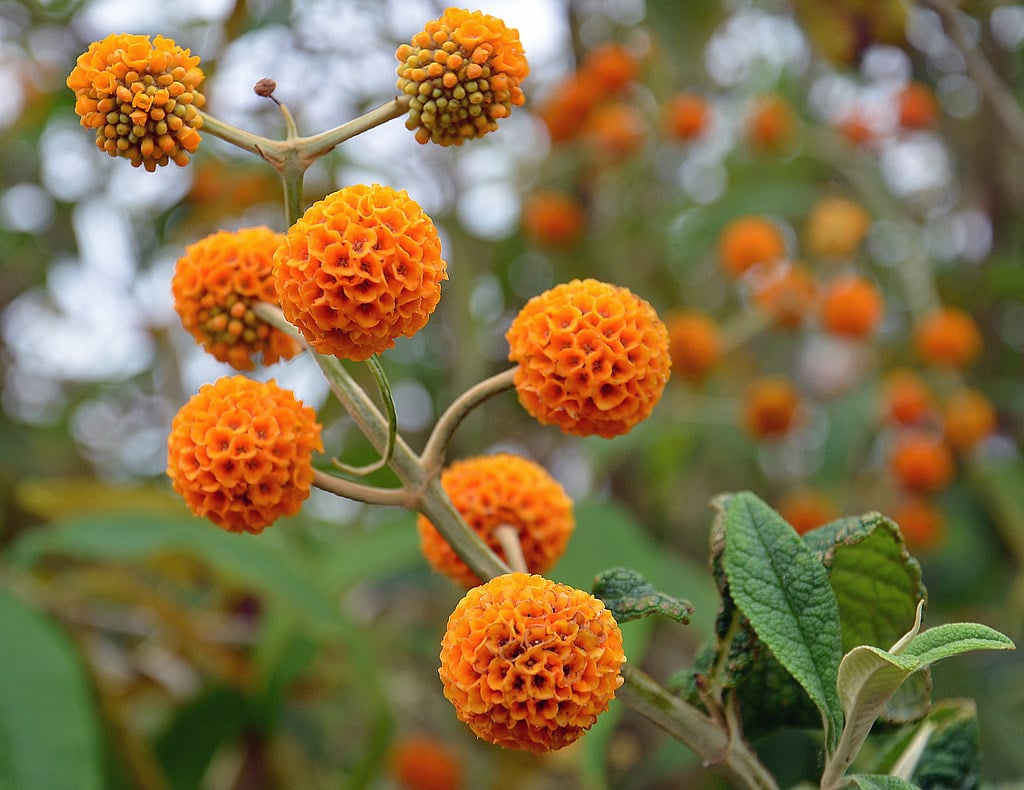
Orange ball tree is also one of the popular ornate orange perennials you can try for your garden. The orange ball tree is an evergreen plant with dark green leaves and bright orange globes flowering. The plant grows up to 5M tall with flowering of 2cm diameter. They bear flowers in early summer. It has sphere-shaped and eye-catching blooms with various small flowers. However, you may not know, but it is one of the most beautiful wildlife plants, attracting bees and butterflies.
Specifications
- Botanical name – Buddleja Globosa
- Soil type – any soil type
- Sunlight – full or partial sun exposure
- Exposure – Sheltered
- Hardness – H5
- Size – 4 to 6 and sometimes 8 meters in height and width
3. Blackberry Lily
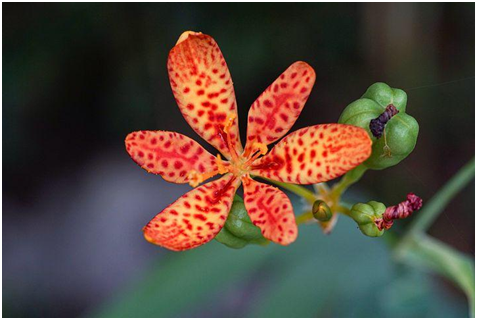
The name can mislead you as it does not come from the Lily family. Instead, it is from the Iris family. Also, the beautiful red-spotted flowers have nothing to do with the words black or berry. However, its seed pots resemble blackberries, and therefore, it is named after it. These flowers are ideal for brightening your garden as they last several months. It is also known as the leopard lily. You can find this flowering plant in some regions in Russia and a few places in Asia.
Specifications
- Botanical name – Iris Domestica
- Soil type – Any PH, loam, or clay
- Sunlight – Partial shade/ full sun
- Exposure – Sheltered
- Hardness – H7
- Size – 0.1-0.5 spread and 0.5-1 M height
4. Blanket Flower
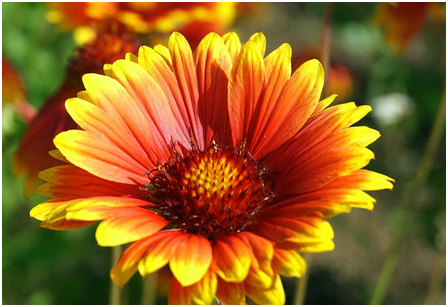
The blanket flower is also one of the famous and short-lived perennials you can plant in your garden. The dark-red flowers with soft orangy yellow tips are very attractive for both humans and pollinators. They can grow in almost every part of the UK. It usually grows about 20 inches spread and 24 inches tall. These plants can grow quickly as it takes only one year to grow big from seeds. It is a warm-seasoned flower that requires proper care and sunlight.
Specifications
- Botanical name – Gaillardia Pulchella
- soil type – Loam, sand, chalk with any pH
- Sunlight – Full sun
- Exposure – Exposed or sheltered
- Hardness – H4
- Size – 0.1 to 0.5 m in height and 0.1 to 5 m in width
5. Butterfly Weed
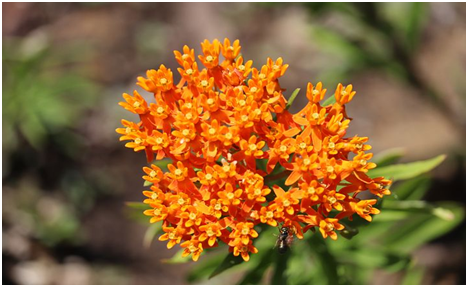
Butterfly weed is also a must-try summer/autumn orange perennial for your garden, especially if you love a vibrant cottage look. They are invasive weeds and can spread rapidly if you do not attain them properly. However, the bushy green foliage with bright orange flowering is a pollinator magnet. The best part of this plant is that it contains medicinal properties. People with pulmonary and pleurisy diseases can get benefit from their roots. It starts blooming from May to September and requires a medium amount of water.
Specifications
- Botanical Name – Asclepias Tuberosa
- Soil Type – sand, clay, loam with alkaline or acidic pH
- Sunlight – full sun
- Exposure – sheltered
- Hardness – H4
- Size – 0.1 to 0.5 width, 0.1 to 5 m height
6. Chrysanthemum

Chrysanthemum usually comes in red, but they are also available in other colours, including brilliant orange. These perennials can grow up to 90 cm tall. Also, all Chrysanthemums have shallow roots and need frequent watering to live healthily. The flowers will be an excellent addition to your garden and make it look prettier. You must grow the plants in the nutrient-rich soil and water them daily. But, you also must be careful while watering as water stress can lead to root rot. You can buy artificial Chrysanthemum as well.
Specifications
- Botanical Name – Chrysanthemum ‘Sikardo Orange’
- Soil Type – loam with natural pH
- Sunlight – Full sun
- Exposure – sheltered
- Hardness – H3
- Size – 0.1 to 0.5 m in height and width
7. Canna Lily
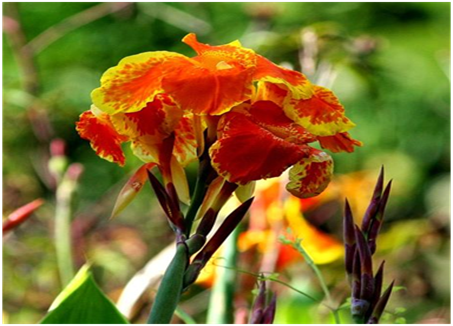
Canna lilies come with green foliage and incredible bright orange flowers. They look aesthetically pleasing and have a hardier nature. These perennials can easily overwinter if you keep them indoors. But if you plant them outdoors, they will work as an annual plant. As it grows really tall, making it a fantastic border plant. It requires proper moisture and hydration yet needs well-draining soil. It is a warm-climate flower plant that prefers a bit of acidic and neutral earth with proper nutrients.
Specifications
- Botanical Name – Canna x generalis
- Soil Type – any soil with any pH
- Sunlight – Full sun
- Exposure – sheltered
- Hardness – H3
- Size – 0.1 to 0.5 width and height
8. Gerbera Daisy
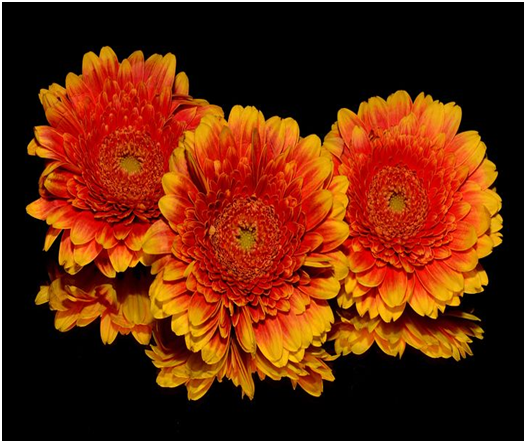
Gerbera Daisies are native to Africa and come in various colours like red, white, pink, yellow, orange, etc. Though it is like warm and humid weather, the hybrids can withstand cold easily. These orange perennials offer wheel-shaped flowers in spring, autumn, and summer time. It generally grows in sloped and rocky environments and requires well-draining soil. It has thin petals, and the flower spreads its seeds in different locations. The blooming time of this specific orange flower is between September to December.
Specifications
- Botanical Name – Gerbera ‘Sweet Sunset’
- Soil Type – Loam, chalk, sand with any pH
- Sunlight – Full sun
- Exposure – Sheltered
- Hardness – H3
- Size – 0.1 to 0.5 m in height and width
9. Golden Pea
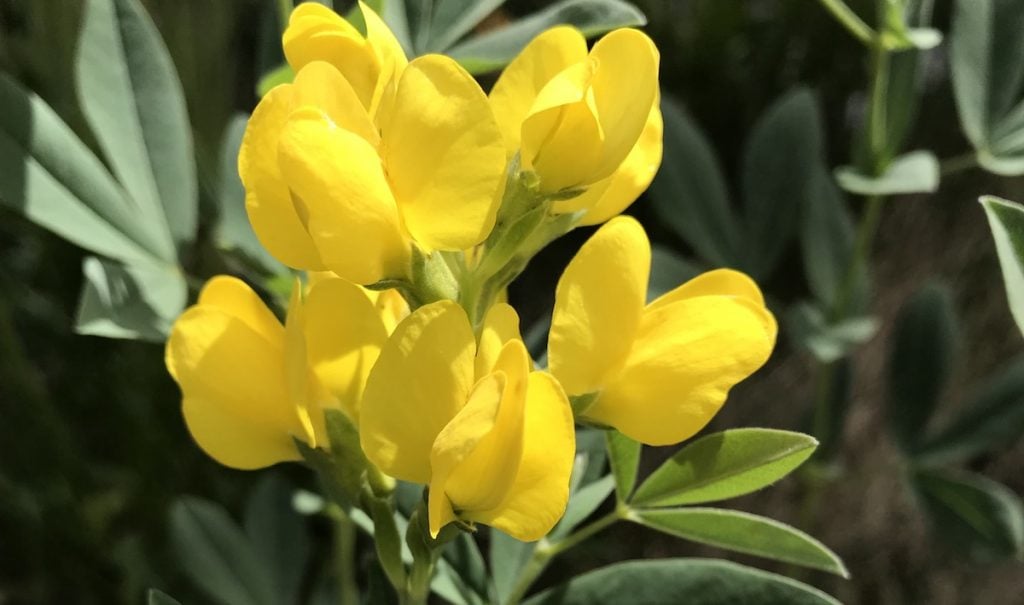
Golden Pea comes from the Lathyrus family and produces beautiful golden-orange flowers. Some of them are also used for food production. But you can grow this orange perennial in your garden. The upright stems covered with golden flowers bloom every early summer. It can grow 3 to 4 inches long with proper care. It is a kind of perennial that generally grows in the wet or damp soil of the mountains and hills. Also, it can also withstand trampling and drought.
Specifications
- Botanical Name – Lathyrus Aureus
- Soil Type – Sand, clay, loam with any pH
- Sunlight – Full sun or partial shade
- Exposure – exposed or sheltered
- Hardness – H3
- Size – 0.5 to 1 m height and 0.1-0.5 width
10. Avens
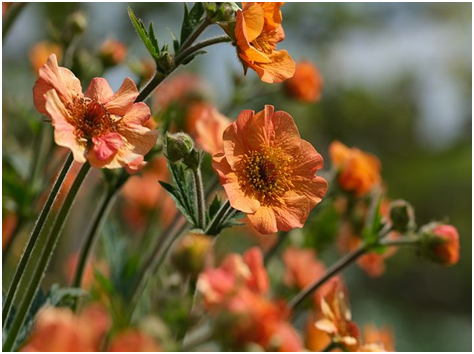
Avens come in various colours like red, orange, and white and bloom between early spring and late autumn. They come from the rose family and do not require much care and maintenance. Avens can grow up to 50 cm in height and are ideal for being the centre of your garden. It can grow up to 2 feet, so it won’t take up much space in your garden. It is said that the roots were used for different medicinal purposes as well.
Specifications
- Botanical Name – Geum ‘totally tangerine’
- Soil Type – Any soil with any pH
- Sunlight – Full sun
- Exposure – Sheltered or exposed
- Hardness – H7
- Size – 0.5-1 m height and 0.1 to 0.5 width.
11. Dahlia
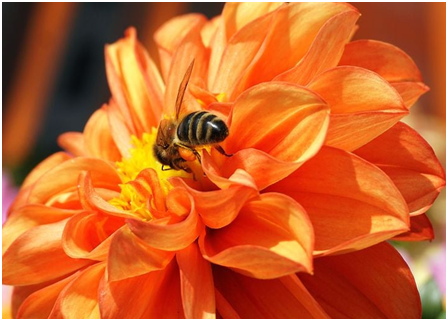
Dahlias are similar to Chrysanthemums but look fuller and rounded with pointed petal tips. Also, Dahlias come in various shades, sizes, and colours, and the most prominent ones are deep orange. It is a butterfly-loving flower that is easy to grow. Conventionally, people love this flower due to its medicinal properties. You can plant this perennial and add a magical touch to your garden and bloom from summer to autumn. If you plant them, the soil must be well-nutrient and organic with lots of moisture.
Specifications
- Botanical Name – Dahlia ‘Orange Nugget’
- Soil Type – Clay, sand, loam with any pH
- Sunlight– Full sun
- Exposure – sheltered
- Hardness – H3
- Size – 0.5-1 m height and 0.1-0.5 width
12. Globe Flower
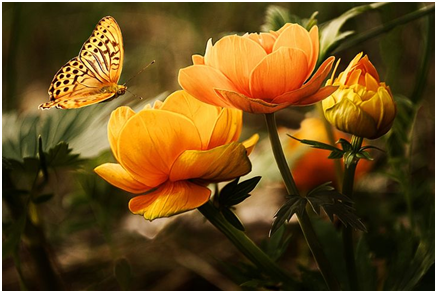
Globe flowers like moist soil and are ideal for bog gardens. You can also plant these perennials near ponds, streams or artificial water bodies. The vibrant orange globe flowers can bring life to your garden. They are low-maintenance flowers unless you do not forget to water them. If you are searching for something unique that no one generally has in their garden, this is the one. It blooms every spring with finely-textured and ball-shaped foliage that will attract visitors to your garden.
Specifications
- Botanical Name – Trollus x Cultorm ‘Orange Princess’
- Soil Type – Clay or loam with any pH
- Sunlight – Full sun or partial shade
- Exposure – Exposed or sheltered
- Hardness – H7
- Size – 0.5 to 1 m height and 0.1 to 0.5 width
13. Shrubby Cinquefoil
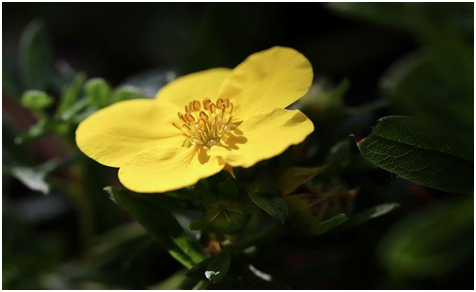
The Shrubby Cinquefoil is a fast-growing plant that grows multiple button-shaped blossoms throughout the summer. These perennials can outgrow you if you do not attain them rightly. Shrubby Cinquefoil bushes can grow up to 2m high. Also, they naturally resist various pests and insects. It is one of the most popular landscape shrubs that have a longer blooming time. It is a sturdy plant that can withstand air pollution, drought, salt air, etc. Despite its reliability and toughness, it is not ideal for places with hot and humid weather.
Specifications
- Botanical Name – Potential Fruticosa
- Soil Type – Loam, chalk, sand with any pH
- Sunlight – Full sun or partial shade
- Exposure – exposed or sheltered
- Hardness – H7
- Size – 0.5 to 1 m in height and width
14. Daylily
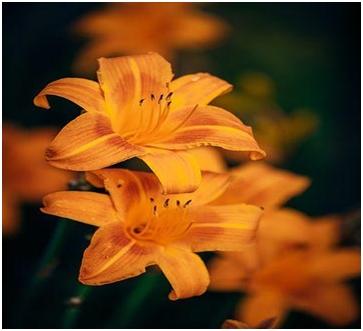
As the name suggests, the beauty of these perennials lasts only for one day. However, you do not need to worry about it, as a single plant can produce thousands of daylilies to light up your garden. Also, they are low-maintenance and bloom for the entire summer season. If you like two-toned flowers, the Daylily will have your heart. It comes up with thin yellow-coloured sticks and orange petals. It is edible, and a few people use it as a thicker soup. You may get artificial lilies from Britful Store.
Specifications
- Botanical Name – Hemerocallis fulva
- Soil Type – all soil with any pH
- Sunlight – Full sun or partial shade
- Exposure – exposed or sheltered
- Hardness – H7
- Size – 0.5 to 1 m in height and width
15. Himalayan Spurge
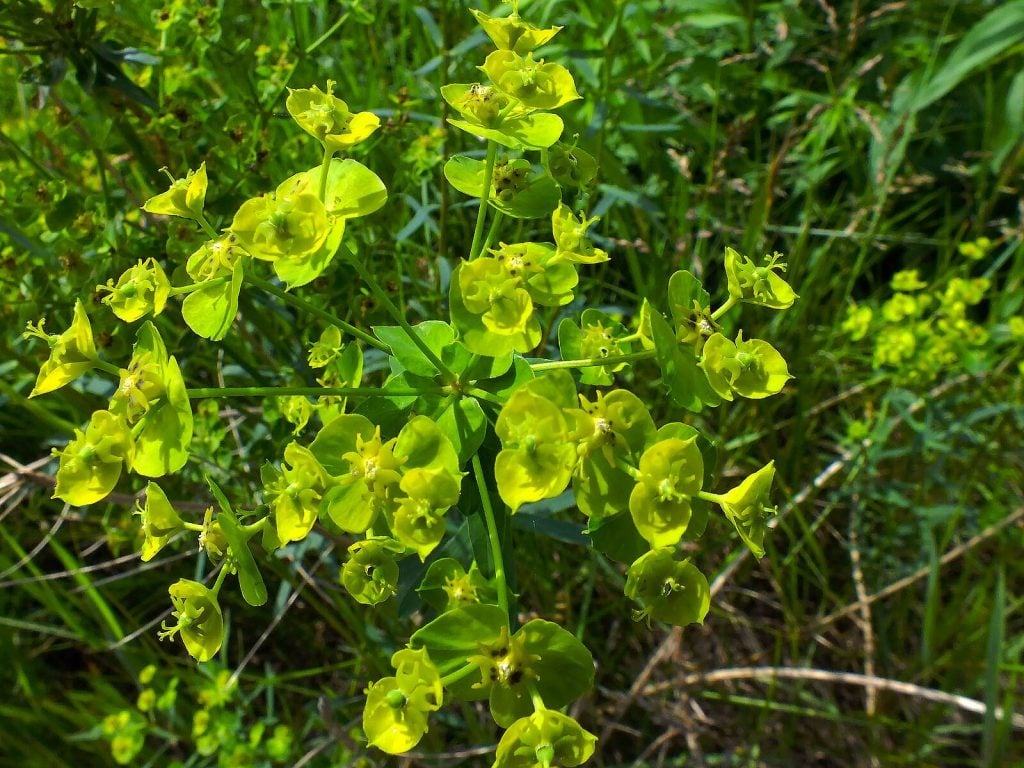
Himalayan spurge is native to Bhutan, Tibet and southern China. They have long dark-red stems, green foliage and red/orange flowers. The plant does not require much attention and care. In addition, if the environment is appropriate, the plant can become invasive. It is also called Wallich Spurge and can be found in alpine meadows, forest floors, slopes, etc. This perennial starts blooming from May to August. The head of the flower is yellow with rounded yellow-coloured bracts and is almost 10 cm long.
Specifications
- Botanical Name – Euphorbia Griffithii
- Soil Type – Loam or clay with any pH
- Sunlight – partial shade
- Exposure – sheltered or exposed
- Hardness – H7
- Size – 0.5 to 1 m width and height
16. Lantana
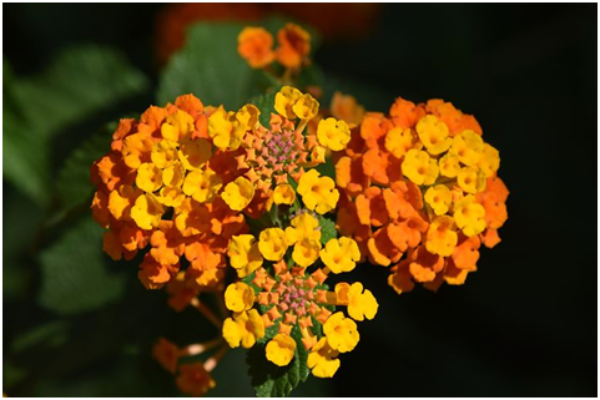
Lantana is a vining plant with various attractive colours like red, white, blue and orange flowers. The plant requires proper water drainage and plenty of irrigation to thrive well. Also, the flame orange trails of lantana can enhance the beauty of your garden. However, these perennials need indoor overwintering to survive for long. It is one of the quickly-growing perennials that can produce several flowers. However, you grow this flowering plant in your garden in different weather and soil conditions.
Specifications
- Botanical Name – Lantana Camara
- Soil Type – all soil with any pH
- Sunlight – Full sun
- Exposure – sheltered
- Hardness – H1C
- Size – 1 to 1.5 m in height and width
17. Iris
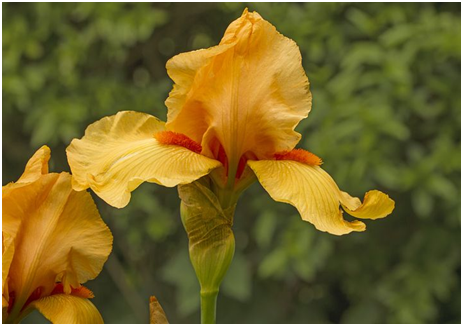
Iris is a heavenly beautiful flower in various colours, including brilliant and pale orange. The plant does not need much attention and care. The paper-like flowers are fragile but look elegant and need good watering to blossom. They primarily bloom between May to July. The flower generally contains a total of six lobes, which grow in different directions to offer an attractive appearance. It may look fragile, but in reality, it is a very hardy flower plant. Also, you can grow this plant in any kind of soil with good drainage capability.
Specifications
- Botanical Name – Iris ‘Orange Harvest’
- Soil Type – Loam, sand with acidic to neutral pH
- Sunlight – Full sun
- Exposure – sheltered or exposed
- Hardness – H7
- Size – 0.5 to 1 m height and 0.1 to 0.5 width
18. Rock Rose
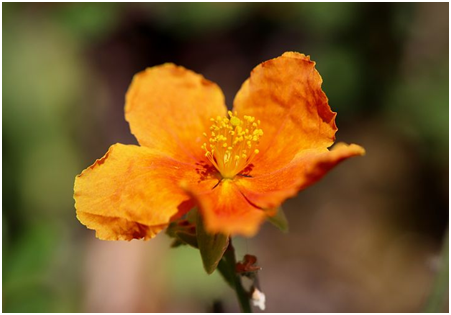
The rock rose plants come in different shades, but the orange tissue-like petals on the rock rose plants look expensive. The plant is ideal for beginner gardeners as it can thrive in almost every climate and soil condition, including low to no watering conditions. It is mainly an evergreen shrub which grows in high-altitude and rocky areas in Europe. The best part of this flowering plant is that it also contains medicinal properties, and many people use it to reduce stress, panic, anxiety, etc.
Specifications
- Botanical Name – Helianthemum Copperknob
- Soil Type – All soil with alkaline to neutral pH
- Sunlight – Full sun
- Exposure – sheltered or exposed
- Hardness – H4
- Size – 0.1 to 0.5 height and width
19. Peony
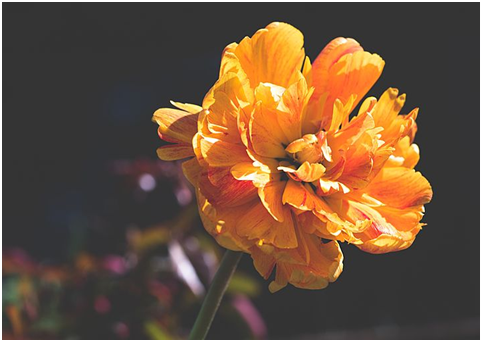
Peonies are an excellent choice for British gardens. They come in different types of shapes, colours, and sizes. But the orange peony has an enticing look that will brighten your garden. These perennials change tone as they mature and bloom throughout spring and summer, based on the location and its types. You must provide them with well-drained soil and full sunlight to help them bloom. Peonies also relish the winter season as they require a cold environment for bud formation.
Specifications
- Botanical name – Peony ‘Coral Charm
- soil type– Loam, clay sand with any pH
- Sunlight– Full sun or partial shade
- Exposure – sheltered
- Hardness – H6
- Size– 0.5 to 1 m in height and width
20. Orange Coneflower
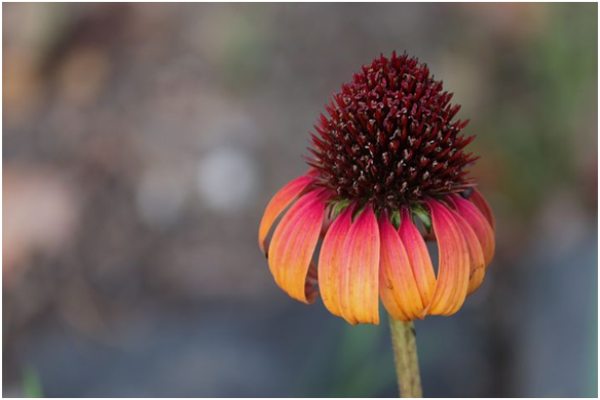
Orange Coneflowers are very attractive and have a star-like shape and orange-yellow petals. They are also very popular among orange perennials. Orange Coneflowers have a soft, hairy surface with a dark centre. And the Orange Coneflowers bloom throughout summer and autumn. The unique shape and the nature-attracting quality of this flower make it a perfect flower to plant in your garden. It is a flowering plant that requires light shade and full sunlight with moist and clay soil with well-drainage capability.
Specifications
- Botanical name – Echinacea ‘Orange Passion
- soil type– Loam, chalk, sand with any pH
- Sunlight– Full sun
- Exposure – sheltered or exposed
- Hardness – H5
- Size– 0.5 to 1 m height and 0.1 to 0.5 m width
21. Tulip
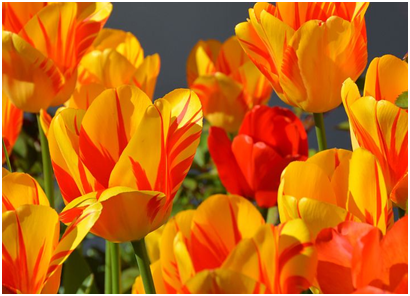
Tulips are also great for gardens as they come in thousands of shades. Also, they grow well in cold weather. And if you wish to plant tulips, you have plenty of options under the orange spectrum, such as Angelic orange and orange queen. It is true that it has gained popularity across the world, but as a hard-to-handle species. However, people enjoy this flower and use it as an ornamental tree. However, because of its stunning appearance, it will make your garden look more beautiful.
Specifications
- Botanical Name – Tulipa
- Soil Type– all soil with any pH
- Sunlight– Full sun
- Exposure – sheltered
- Hardness – H6
- Size– 0.1 to 0.5 m in height and width
22. Peruvian Lily
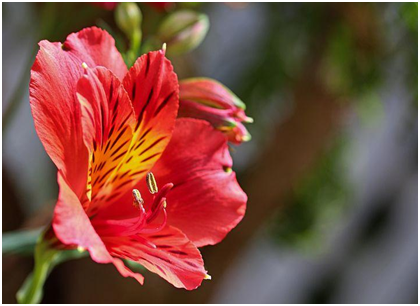
Yes, another lily made it to our list again. The Peruvian lily needs a lot of elbow space as it is a bushy perennial. Its dark orange lily-like flowers blossom all over the plant’s body. The plant can reach 1M in height along with its bushy nature, which gives it a beautiful appearance. This orange perennial produces dark-green coloured stems, which make it more attractive. The tri-coloured petals of this flower offer an extra pop to its orange base. You can plant them in fertile soil and warm weather.
Specifications
- Botanical Name – Alstroemeria or Orange Glory
- Soil Type– All soil types with any PH
- Sunlight– Full or partial sun
- Exposure – Sheltered
- Hardness – H4
- Size – 0.5-1 M in spread and height
23. Persian Buttercup
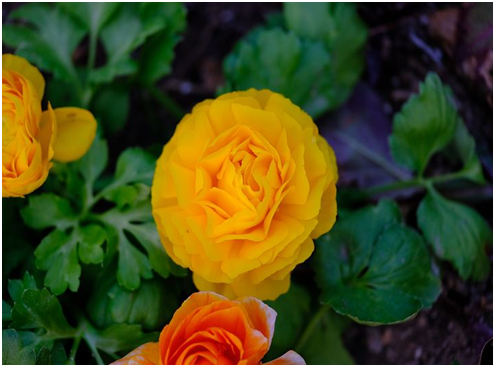
The blossom heads of Persian buttercup look like paper-mache creations, and the bright orange makes them all the more attractive. It is also called ranunculus, and the plant can thrive in UK weather as it prefers cooler climates. The petals of its blossoms quickly wither in hotter climates. You can purchase this orange perennial in different orange colours like dark orange to peachy orange. If you wish to plant them in your garden, make sure to grow them in loamy or sandy soil.
Specifications
- Botanical Name – Ranunculus Asiaticus
- Soil Type– Sand or Loam with any PH
- Sunlight– Full sun
- Exposure – Exposed
- Hardness – H4
- Size – 0.1-0.5 in spread and height
24. Georgian Fleabane
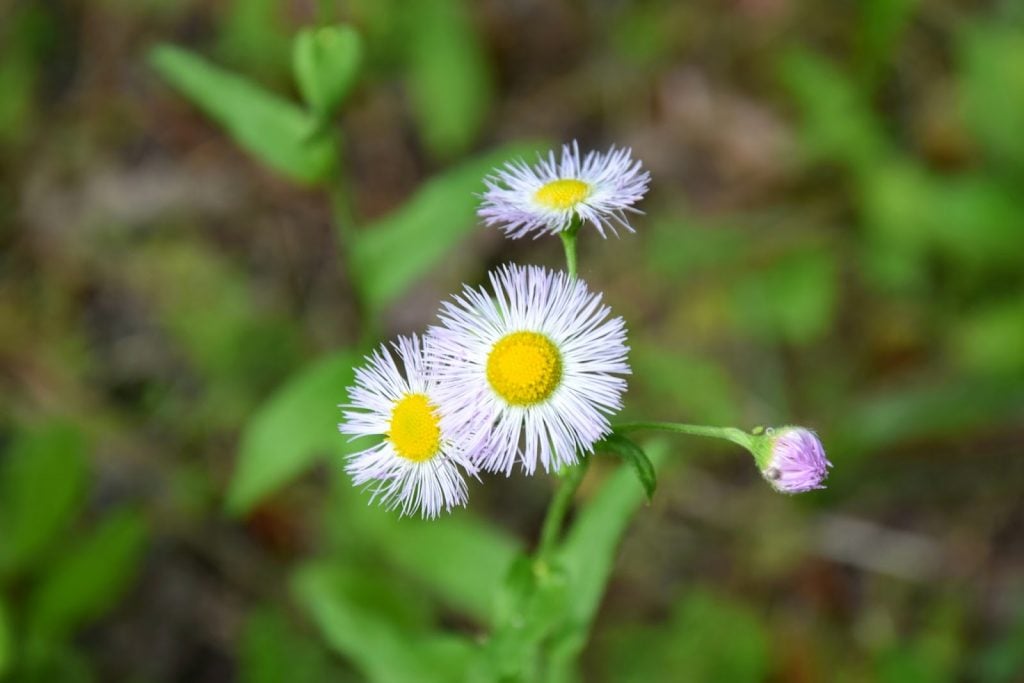
Georgiana Fleabane originates from Asia. It is a sturdy plant that can do well in almost any weather and is suitable for UK weather. The disc-shaped bright orange blossoms can brighten up your garden space. However, like most perennials, it cannot survive in water-logged terrains. The one thing that grabs the attention of people is its woolly buds and ordinary yet eye-catching bright colour of the petals. The hardiness and time-taking flowering season is another aspect of this plant. If you want to plant them, use alkaline clay soil.
Specifications
- Botanical Name – Inula Orientalis
- Soil Type– All soil types with any PH
- Sunlight– Partial or full sun
- Exposure – Exposed/ Sheltered
- Hardness – H6
- Size – 0.1-0.5 in Height and Spread
25. Hawkweed
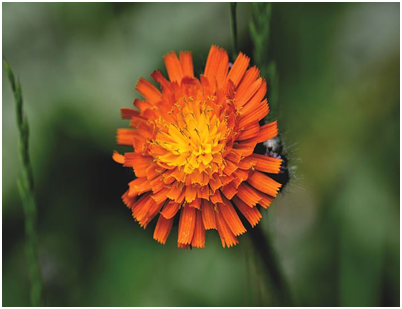
Hawkweed bears bright orange blossoms which bloom between June and August every year. The plant is notable for its structural appearance. However, as the name suggests, it is an invasive plant which must be controlled rigorously so that it does not ruin your garden. It is a unique-looking flower with trimming tips. The plant generally grows in mountain meadows and requires full or partial sunlight to bloom. You can plant them in your garden if you want, but it requires proper care and trim.
Specifications
- Botanical Name – Hieracium Aurantiacum
- Soil Type– Any PH, Loam, sand, chalk
- Sunlight– Partial or full sun
- Exposure – Exposed/ Sheltered
- Hardness – H5
- Size– 0.5-1M spread and 0.1-0.5 height
26. Chinese Trumpet Vine
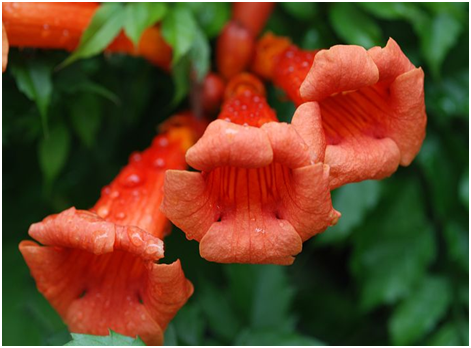
In the summer months, big, trumpet-shaped orange flowers bloom on these deciduous creeper vines. They grow very fast and reach a height of 10 meters. Originally found in East Asia, the Chinese trumpet vine prefers damp, fertile soil and exposure to sunlight. The leaves shrouding the flowers have sharp edges. Hummingbirds love visiting these blooms for their sweet nectar. After the blooms wilt away, attractive seedpods take their place. You can easily pick them in your garden if you are searching for a unique flower to plant.
Specifications
- Botanical Name – Campsis Grandiflora
- Soil Type– prefers fertile soil that is moist but not waterlogged
- Sunlight– total sun exposure
- Exposure – Exposed
- Hardness – H3
- Size – 3-5 M spread and 10 M height
27. Ligularia
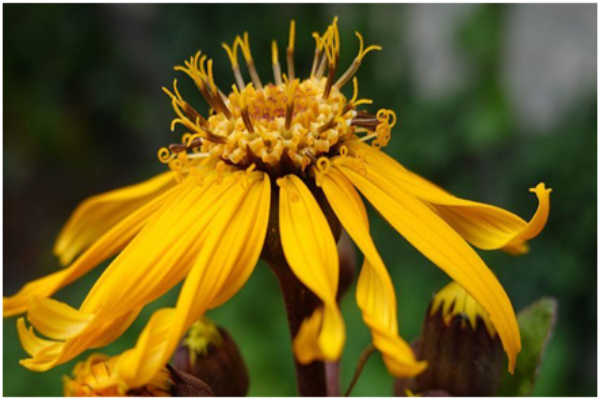
Next on this list of orange perennials comes the Ligularia. It is also called the Leopard plant because of its characteristic yellow or orange flowers with brown disc florets in the centre. They mostly grow in damp soil and are native to central and east Asia. The leaves are deep green and have a glossy feel, and the petals are golden in colour. It is very tricky to grow Ligularia in gardens because they wilt very fast.
Specifications
- Botanical Name – Ligularia spp (there are many species within the genus)
- Soil Type– prefers moist, well-drained soil rich in organic matter
- Sunlight– partial to full shade
- Exposure – sheltered
- Hardness – H5
- Size – 30 cm to 2 meters in height and spread 30 cm to 1.5 meters
28. Helenium
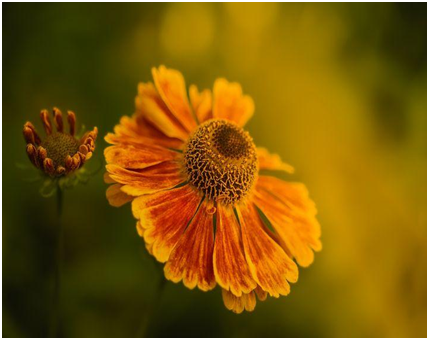
Helenium belongs to the Asteraceae family and is a herbaceous perennial plant. It is native to North and South America. The plant displays daisy-like flowers in a bright orange hue. The flowers are also called sneezeweed because they were used to make snuff in the past. The flowers are easily identifiable by the globe-shaped central floret. Helenium would be the best addition to any wildflower garden. They attract butterflies when they are in full bloom with their sweet scent.
Specifications
- Botanical Name – Helenium spp. (there are many species within the genus)
- Soil Type- prefers moist, well-drained soil that is fertile with copious organic matter
- Sunlight– full sun to partial shade
- Exposure – sheltered
- Hardness – H7
- Size – 60cm to 1.2 meters in height and spreads 30cm-60cm wide
29. Wallflower
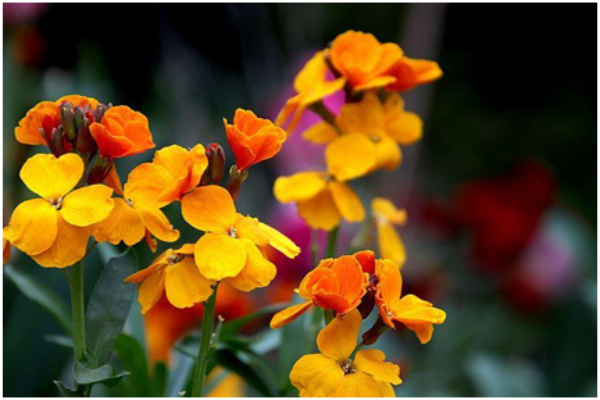
Wallflowers are so named because of their habit of growing from the cracks in the walls. They are commonly found in the Northern Hemisphere along the roadside in the early springtime. Wallflowers can be a wonderful addition to the garden because of their vibrant and fragrant orange blooms. Bumblebees love the Wallflowers and pollinate them. They can also be found on cliffsides and can be wonderful in a rock garden.
Specifications
- Botanical Name – Erysimum Cheiri
- Soil Type– prefers well-drained soil that is moderately fertile and has a pH between 6.5 and 7.5
- Sunlight– full sun to partial shade
- Exposure – Exposed
- Hardness – H6
- Size – 30cm to 60cm in height and spread 30 cm to 45cm wide
30. Rainbow Bitter Root
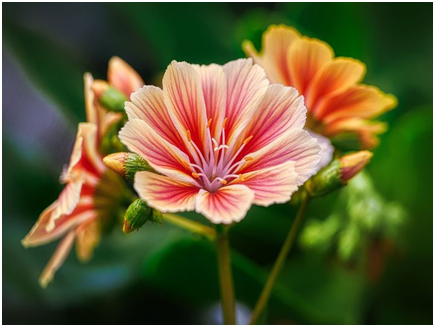
This is a striking succulent plant that blooms in spring and summer. The blooms can be found in shades of orange, pink, and red. This is a low-growing plant that is native to the rocky mountain areas of North America. It is easy to grow in the gardens with very little care. This flower is very vulnerable to crown rot. Hence, when planting it in your garden, make sure that the crown stays above ground level.
Specifications
- Botanical Name – Lewisia Cotyledon
- Soil Type– prefers well-drained soil that is low in nutrients
- Sunlight– full sun to partial shade
- Exposure – semi-exposed
- Hardness – H5
- Size – 5cm to 15cm in height and spreads up to 30cm wide
31. Bird of Paradise
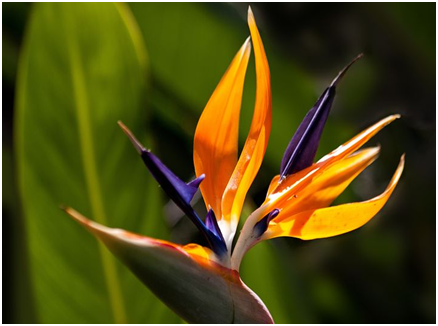
This is the strangest flower among all orange perennials. Birds of paradise are ornamental plants that can add to the aesthetics of any home. Also called the crane flower because of the way it looks. The plant is native to South Africa. The plant prefers warm climates and can be grown as a houseplant. It has thick foliage that surrounds the alien-looking flowers. This regal plant needs to be sheltered against strong winds, or it may shatter from the middle.
Specifications
- Botanical Name – Strelitzia Reginae
- Soil Type– prefers well-drained soil that is rich in nutrients
- Sunlight– full sun to partial shade
- Exposure –Exposed
- Hardness – H3
- Size – 1.5 to 1.8 meters tall and wide in their native habitat
32. Welsh Poppy
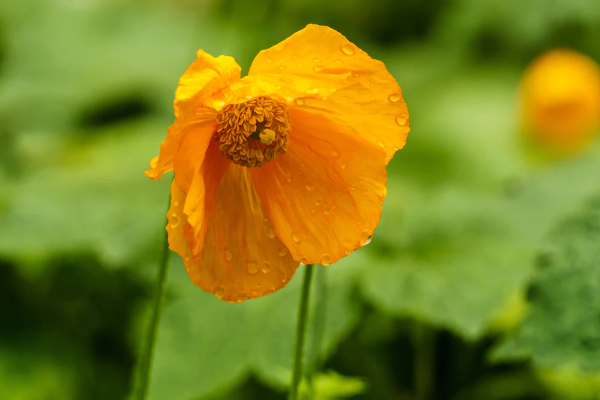
Welsh poppies are orange perennials that have yellow and orange flowers. Most commonly grown in the garden for its beauty, the Welsh poppies pinnately arranged leaves. The flowers have four petals and a hairy sepal that is lost during blooming. It is native to the British Isles but can now be found all over the UK. Plant them in the shady corners of your garden, and then you can forget about them. It will grow without much intervention and self-seed itself.
Specifications
- Botanical Name – Meconopsis Cambrica
- Soil Type– prefers well-drained, moist soil rich in nutrients
- Sunlight– partial shade to full shade
- Exposure –exposed or sheltered
- Hardness – H6
- Size – 30-60 cm tall and 15-30 cm wide
33. Monkeyflower
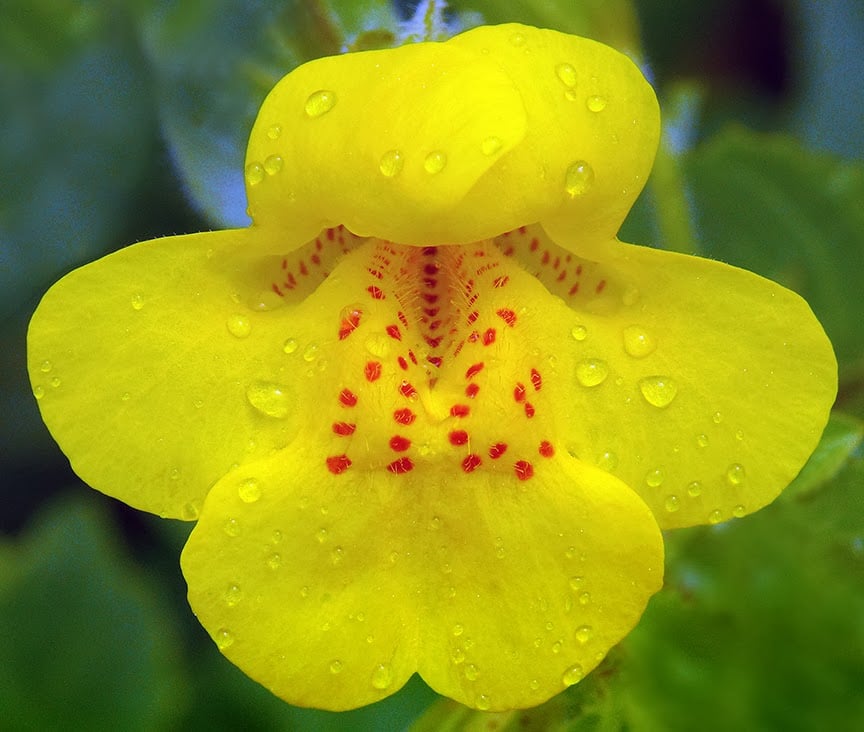
This perennial blossom is named so because the flower resembles a monkey sticking its tongue out of its mouth. The shrubby plant has sticky leaves sprouting in opposite directions from its unbranched stems. The plant bears blooms in shades of white, yellow, scarlet, and mahogany, with some having streaks of other colours. This plant likes to grow in damp soil, especially near a running stream. This falls in the category of an ornamental flower and can be a great gift.
Specifications
- Botanical Name – Mimulus Ringens
- Soil Type– prefers well-drained, moist soil rich in nutrients
- Sunlight– partial shade to full sun
- Exposure –exposed or sheltered
- Hardness – H4
- Size – less than 10 cm tall
34. Red-Hot Poker
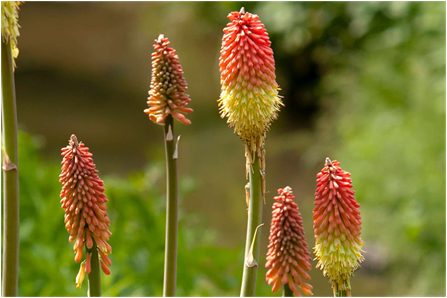
Also known as torch lilies, these are other orange perennials that are available in yellow, orange, and even white. They look stunning in a garden because of their bold flower spikes. The plant can withstand cold weather despite looking like a tropical plant. They attract hummingbirds and butterflies, which adds to the natural beauty of your garden. When watering the plant, ensure that you do not pour any water on the crown or rot that may be set in motion.
Specifications
- Botanical Name – Kniphofia Uvaria
- Soil Type– prefers well-drained soil rich in nutrients and slightly acidic
- Sunlight– partial shade to full sun
- Exposure –exposed or sheltered
- Hardness – H3
- Size – 1.5 meters tall with long, narrow leaves reaching 90 cm long
Wrapping Up!
All in all, you have many choices when choosing to grow an orange perennial flowering plant in your garden. They can enhance the beauty of your home and backyard or add drama to your mundane life. Flowers like the Monkey Flower and the Birds of Paradise will make you the talk of the town. The pop of colour that these flowers add to your home will be enough to brighten up your mood. Instead of using wooden fixtures and furniture to decorate your home, use one of these orange perennials.
Your choice must depend on the weather condition in your area, where you want to keep the plant, and the amount of time you can spare taking care of the plant. If you have a busy life, you should always choose a low-maintenance option.
In this article, we have shared the specification and detail of 34 orange perennials. So, what are you waiting for? Give your home the splash of colour it deserves and liven up your living space.
Frequently Asked Questions (FAQs)
What Are Orange Perennials?
Orange perennials are flowering plants that produce orange-coloured flowers. Perennials are a specific plant type that thrives for two to three or more years. And so it wilts after a year passes and comes back the following year. These are ideal for gardeners to decorate without replanting the next year. Perennials are the opposite of annual plants that do not survive more than one year or season, and you need to replant each year.
What Growing Conditions Do Orange Perennials Have?
Most orange perennial flowering plants prefer well-draining soil with total exposure to sunlight.
However, some prefer partial shade to full shade. It’s essential to choose the right plant for your specific growing conditions. Also, it is vital that the plants are watered daily, and the soil is added with fertilisers every couple of months.
Can Orange Perennials Attract Pollinators?
Many of these plants, such as the red-hot poker, butterfly weed, Himalayan, and helenium, attract pollinators like bees and butterflies. Adding these plants to your garden can beautify your garden and help support the local ecosystem. Also, orange is a lively and bright colour that attracts pollinators like honeybees, wasps, and butterflies.
Is Orange Perennial Suitable for Container Gardening?
Not everyone in the UK has a garden to plant them. Some flowers, like the monkey and daylily, can thrive in containers. But it will require proper care and maintenance. When choosing a container, make sure that it has adequate drainage. Fertilise the plants regularly to ensure it has the necessary nutrients to grow and bloom.
Are All Orange Perennials Available in One Colour?
Nature has many colours to please our eyes. You can find these colours in these flowers despite the name. Most of these flowers bloom in other spectacular shades, and some are even bi-coloured. For instance, these perennials are available in shades like queen orange and angelic orange. No matter what shade you choose, these bright orange flowers will enhance the vibrancy of your garden.

